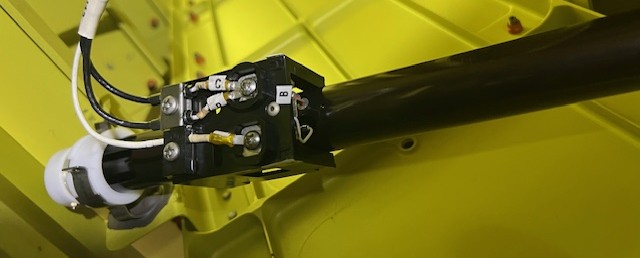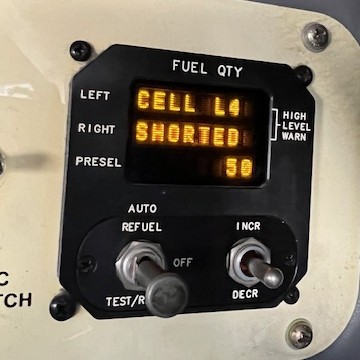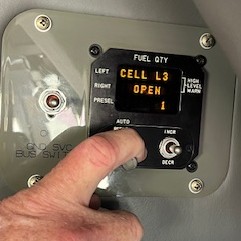 Duncan Aviation airframe technicians recently addressed recurring intermittent fuel quantity issues in two Gulfstream 550 aircraft. The left wing and total fuel indications would intermittently dash with an FQMS (Fuel Quantity Measuring System) Maintenance Required CAS message.
Duncan Aviation airframe technicians recently addressed recurring intermittent fuel quantity issues in two Gulfstream 550 aircraft. The left wing and total fuel indications would intermittently dash with an FQMS (Fuel Quantity Measuring System) Maintenance Required CAS message.
These discrepancies could not be duplicated on the ground.
After defueling, sumping the aircraft, and performing wing ventilation, our airframe technicians started troubleshooting. Below is an overview of the steps taken, but it is not an all-inclusive list.
 On the first aircraft, the GSCP indicated a CELL L4 Shorted fault. While troubleshooting did not reveal any definitive findings, a closer inspection of the strain relief clamps at the probes within the faulted Cell L4 revealed chafing on the Lo-Z wire under the clamp, causing the shorted indication fault. This was corrected. As a precaution, the customer elected to replace the probes in this cell. The aircraft was returned to service with no recurrence of the issue.
On the first aircraft, the GSCP indicated a CELL L4 Shorted fault. While troubleshooting did not reveal any definitive findings, a closer inspection of the strain relief clamps at the probes within the faulted Cell L4 revealed chafing on the Lo-Z wire under the clamp, causing the shorted indication fault. This was corrected. As a precaution, the customer elected to replace the probes in this cell. The aircraft was returned to service with no recurrence of the issue.
The second aircraft displayed CELL L3 Open on the GSCP. Although  troubleshooting did not reveal any definitive findings, the customer elected to replace the fuel probes within the affected cell and the complete left wing fuel quantity wiring harness. Replacing the harness is fairly extensive and is normally only accomplished after all other troubleshooting steps have failed to show a definitive fault. The aircraft was returned to service, and no subsequent issues were reported after multiple flights.
troubleshooting did not reveal any definitive findings, the customer elected to replace the fuel probes within the affected cell and the complete left wing fuel quantity wiring harness. Replacing the harness is fairly extensive and is normally only accomplished after all other troubleshooting steps have failed to show a definitive fault. The aircraft was returned to service, and no subsequent issues were reported after multiple flights.
December 2025
December 2025
October 2025
September 2025
August 2025